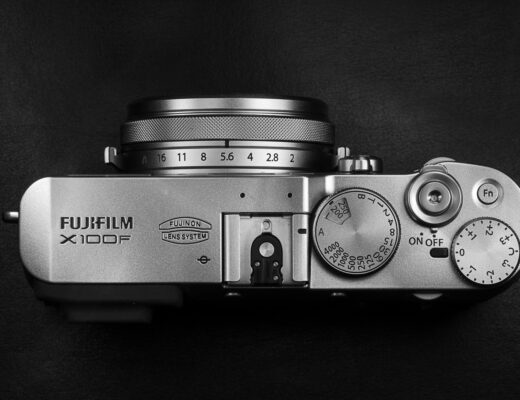I am a huge fan of Fujifilm’s native glass. In fact, it’s one of the major reasons I originally bought into the X system. Recently, however, the market has been flooded with high-quality third-party lenses. So, I ordered up a TTArtisans 50mm f/1.2 to see how it compares to the native glass and just what $1400 additional dollars for the Fujinon XF 50mm f/1 gets you.
Fujifilm offers several different lenses that cover the 50mm focal length. To name just a few, there are the XF 50mm f/1, XF 50mm f/2, XF 16-55mm f/2.8, XF 50-140mm f/2.8, and the list goes on. It’s been said that Fujifilm doesn’t really make a bad lens, and I believe that is true. Even the XC series lenses have good quality optics.
So why do we need to even look at options from third party manufacturers? I can answer that question from my own personal point of view, for sure. Fujifilm’s lenses are optically excellent and, for the most part, cover my day to day photography both personally and professionally. However, there are times when I want to work with a lens that’s a little less than “perfect” and times where I want a lens that is smaller and lighter than Fujifilm’s offerings (think Laowa 9mm f/2.8 vs XF 8-16mm f/2.8). With that said, let’s look at a very cheap offering in the world of third-party lenses: the TTartisan 50mm f/1.2.
Build Quality and Usability
Overall, the metal and glass construction of this lens makes it feel like a premium product, but not quite as refined as the Fujinon lenses. It feels dense and quite heavy considering its size (metal and glass will do that). While the mount is metal and feels quite solid, my copy is a little stiffer to mount than any of my native Fujinon lenses, which glide onto the mount with barely any effort at all. There’s certainly no weather sealing with a lens like this and no warranty should anything go wrong.
The lens is, of course, manual focus only. However, it is reasonably easy to focus. Given the wide aperture, I do wish it had a longer focus throw, but the ring is well dampened and with a little practice, I have been able to nail focus every time when focusing on objects that are reasonably close. I did notice, however, that it can be very difficult to get critical focus at far distances, which is something that the autofocusing Fujinon lenses do not struggle with at all. Stopping down to f/2 or f/2.8 when focusing towards infinity makes this much easier.
The aperture ring has a mechanical link to the physical aperture rather than Fujifilm’s electronically controlled apertures. This, while feeling nostalgic, does mean that you need to open the lens up to f/1.2 in order to get critical focus before stopping it down to your desired aperture and taking your image. This could be improved by including an aperture clutch like some old Asahi Pentax lenses. It is also worth noting that the aperture changes in 1/2 stops rather than 1/3 stops, which also feels quite nostalgic.
Finally, the lens comes with a screw-in metal lens cap. Personally, I love this. It’s another unique touch to this lens that you don’t find in many modern lens boxes.
Overall, Fujifilm lenses are definitely more refined in their build and come with a warranty to back your purchase, but TTArtisans have done a fairly good job of making a lens that punches above its weight in terms of construction quality. So, how does it perform optically?
Image Quality
Honestly, I’d not expected much when it comes to optical quality. At under $100, how much could they really achieve? Did I ever get a shock! Unlike some of the cheap lenses I’ve used in the past, this lens actually holds its own in the image quality department.
When it comes to sharpness, the lens renders plenty of detail. At f/1.2, it suffers a little like most lenses this fast. By f/2, it sharpens up significantly and is about as sharp as you’d ever need a lens to be. Anything around the centre of the frame has plenty of detail, but the corners don’t really catch up until f/4. But, you’ll never likely have anything you need extreme detail rendered in placed right in the farthest reaches of the corners when working wide open.
As for aberrations, LOCA is quite strong until f/5.6, so high contrast edges will show significant purple and green fringing. If you’re a Lightroom user, this is a quick fix and shouldn’t really bother you.
The vignette is the same story. Since this lens can’t take advantage of Fujifilm’s internal trickery to correct for it, you’ll need to do the vignette removal yourself in software. The good news is, it’s only about a stop darker in the corners when used wide-open and by f/4, you won’t even need to correct for it. In fact, the image above at f/2 hasn’t had any vignette removal applied.
Flare and ghosting are where I really expected this lens to fall apart and, as I guessed, it does not perform at a level even close to Fujifilm’s lenses. Modern multi-coatings and lens elements do an exceptional job of correcting for “unwanted” flare and ghosting. This lens, however, does not. When used around bright light sources like the sun, obvious flare and ghosting can be seen.
One thing I wasn’t expecting from a lens of this focal length was nice sunstars, but I have to say, they’re gorgeous! This is one area where quite a few of Fujifilm’s own lenses don’t perform as well as I’d like them to, but lots of third-party manufacturers are creating lenses that produce beautiful sunstars. Check out the cityscape shot above for an example of these.
Bokeh
The bokeh of this lens reminds me a little of Fujifilm’s own XF 56mm f/1.2. It is a little more “defined” than lenses like the 50mm f/1 or 90mm f/2. Take a look at the powerlines in the portrait above to get a feel for what I mean.
When it comes to the “bokeh balls,” these are quite round in the middle but take on a “cats-eye” appearance towards the corner and this can lend itself to a slight swirling feeling at times. The balls themselves are evenly illuminated but to take on the green and purple fringing. Still, these are impressive for a lens that basically costs pocket change compared to the Fujifilm range.
Conclusion
So, what do you get for investing in the big boys from Fujifilm? The obvious benefits are autofocus and a warranty. However, there are plenty of subtleties that make Fujifilm’s lenses. Small things like precision machining and attention to detail make Fujifilm’s native lenses feel that much better. You also get electronically controlled apertures and EXIF data recorded by the camera. On top of that, they’re optically superior when it comes to wide-open sharpness and flare characteristics.
All in all, however, this is an excellent package for the price. If you don’t mind manual focusing, it is certainly a great buy. I’ve really been enjoying it as a walk-around lens to slow down the pace of my shooting and have been pleased with the image quality I’ve been getting back. While it doesn’t replace the convenience and speed of a tiny little lens like the XF 50mm f/2, it is certainly a great value lens that I highly recommend.
























